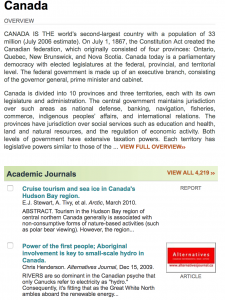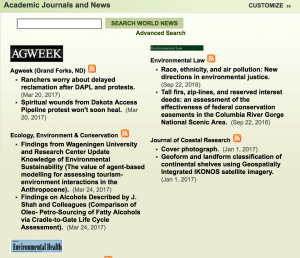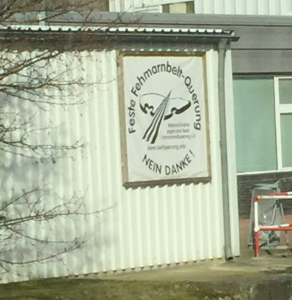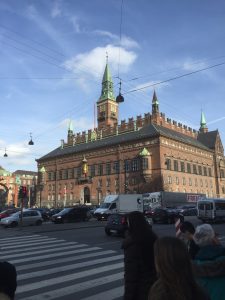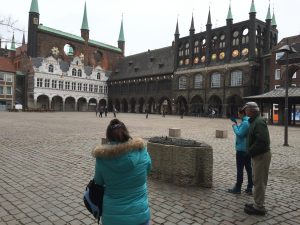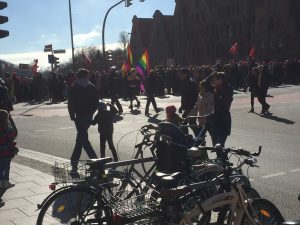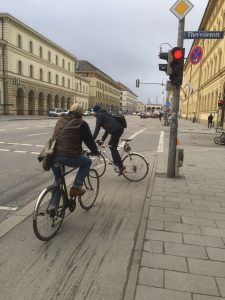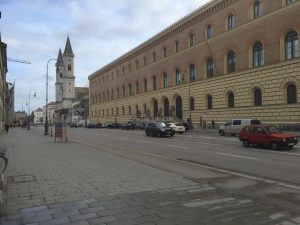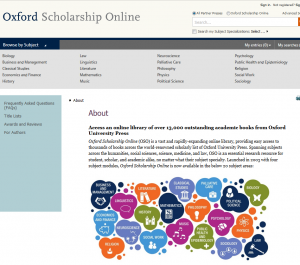A quiet Sunday in Hamburg. Another sunny day but a bit cooler than yesterday. Being here is so much easier when the weather is pleasant. Granted that most of my time is spent inside, either in the office, in a classroom, or in the library. And speaking of libraries, it has occurred to me that I haven’t said much of anything about the libraries here in Germany and as a former librarian, I think I should make some observations about that institution.
The print world seems to be alive and kicking in Germany. When I am out in the evenings and apartment lights are on, I cannot but be amazed at the number of homes that have bookshelves prominently featured. The walls of nearly every living room have bookshelves—floor to ceiling bookshelves—filled with books. Bookstores seems to be numerous as are newspaper vendors. The university libraries are huge (I think I mentioned that the Staatsbibliothek in Munich has some ten MILLION volumes). The library for the University of Hamburg, which also serves as the state library—hence the designation of “Staats- und Universitätsbibliothek Hamburg,” meaning the state and university library of Hamburg—has 3.7 million bound volumes, 886,000 electronic resources, 7,500 western manuscripts, 1,500 eastern manuscripts, 3,200 music manuscripts, 5,800 print journals and 69,000 e-journals. This serves 40,000 students as well as the 1.2 million citizens of Hamburg. (There are other public libraries in the city as well.) The main library, Carl von Ossietzky Library, is located on the university campus and other branch libraries are scattered about.
The law library is on Rothenbaumchaussee, across the street and down half a block from where I am; the Asian and African and social science libraries are just near the train station, also a five-minute walk away. Then there’s the reference library in the Center for the Study of Manuscript Cultures where I spend most of my days. It’s small, occupying a room about 20 x 30 feet and devoted, as you might guess, to works on the history of manuscripts and books from Asian, Africa and Europe.
Using the library is pretty straightforward and incredibly efficient. I was issued a library card during my first week here. It has a personal number and a PIN associated with it. With this information, I can access the catalog, all the university databases and check out books. When you want to borrow a book, you find it in the catalog, tell the system you want to borrow it, and enter your card number and PIN. Within eight to twelve hours, your book is ready to be picked up. You go to the library, drop all your gear—coat, hat, bag—in a free locker and enter the borrowing area. Here, you find rows of numbered shelves. The last digit on your ID card tells you which number shelf holds your material. You then use the first four digits to locate your book. A paper slip bearing your ID number and the first four letters of your last name has been inserted into the book so you can identify it. You then take your book to a check out machine. There you place your ID card, bar code up, on the table. The machine reads your number, then you place the book on the table and the machine reads the RFID tag attached to the book. You complete the transaction and you are done. The book is de-sensitized so you can pass through the security gate and you’re off. The slip of paper tells you when the book is due and if you want to renew, you simply log into your account on the library system and renew, just like at Cowles.
One big difference is the classification system; no LC here. I haven’t tried to figure out the entire scheme, only what I need for my particular area. The library has the obligatory café and the librarians are, just like at home, very helpful. The place is also, ALWAYS, full of students and faculty. I think it makes a big difference that university students in Germany, as in most of western Europe, do not pay for their educations, or at least only a very modest amount. In addition, they are provided with stipends that enable them to live while they are studying. Of course, the other major difference here is that only the best of the best, historically, have been granted this privilege. A university education here is not, unlike the States, considered a birthright. But then, also unlike the States, there are many other opportunities to receive training that will provide you with a way to make a living.





